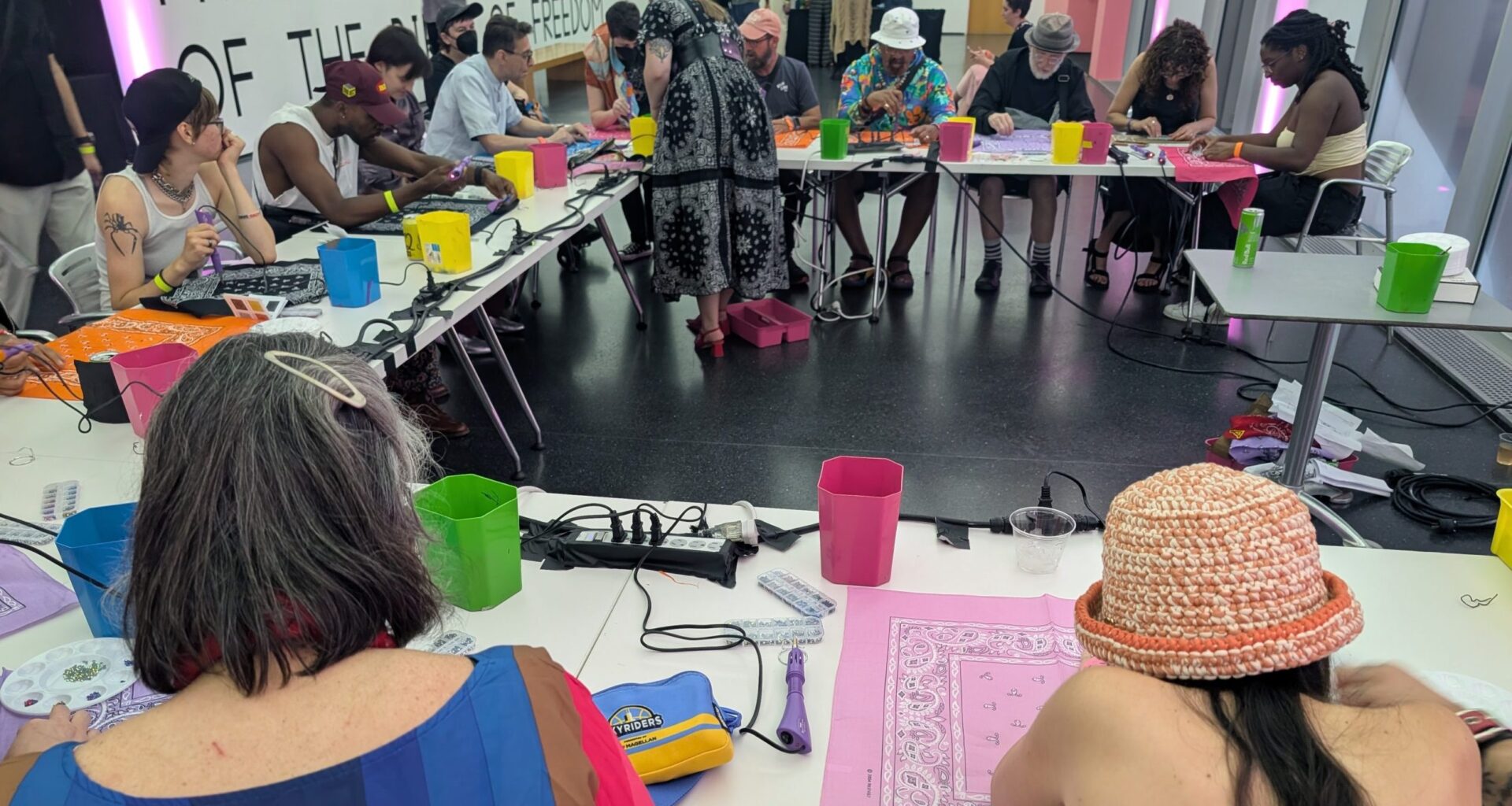The windows at the Museum of Contemporary Art, 220 E. Chicago Ave., glowed a bright purple late into the evening of July 18. Hundreds of people waited in a line that wrapped around the block to get into Prime Time, an after-hours party hosted by the museum.
Prime Time began 10 years ago, but with this party, it returned to the MCA for the first time since the pandemic began. The event is usually in response to an ongoing exhibition at the museum. This was one paired with City in the Garden, which highlights Chicago’s unique role in queer art and activism through history. The exhibit features works from 30 artists and collectives and splits into five sections: Garden, Club, Street, Cinema, and Utopia.
Director of Adult Programming Daniel Atkinson said the MCA is uniquely positioned to respond to existential threats to the queer community.
“There’s a lot of erasure happening right now,” he said. “So the response, rather than to run, is to say, “Okay, well, we have this amazing megaphoning platform. So, what are we gonna do?”
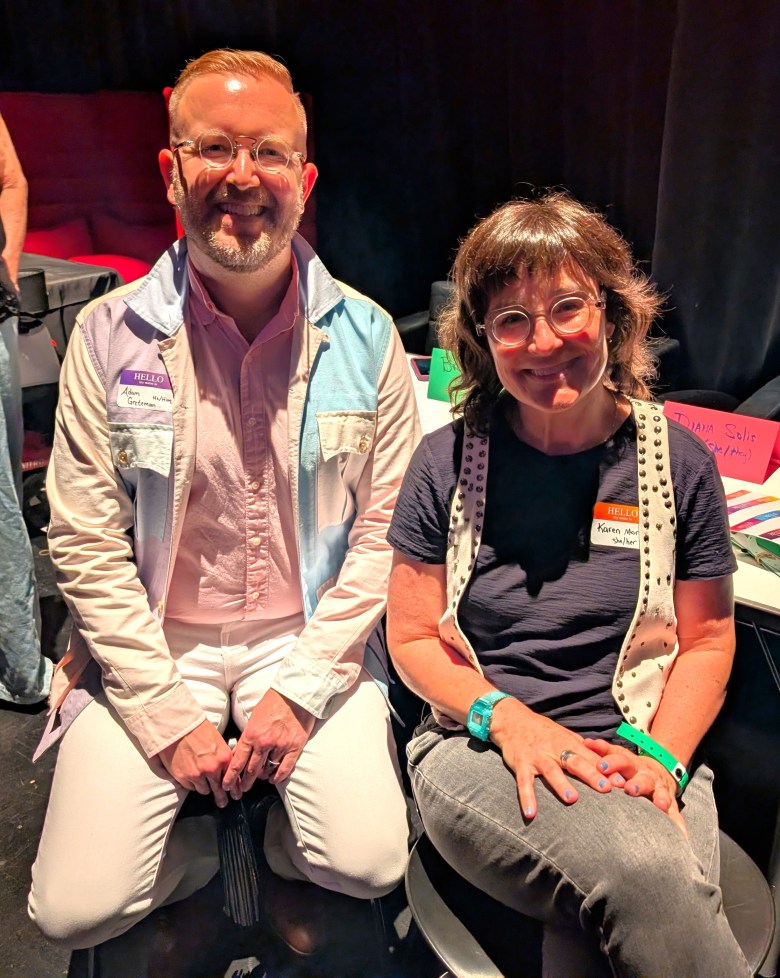 LGBTQ+ Intergenerational Dialogue Project co-founders and co-facilitators Adam Greteman and Karen Morris. Photo by Carrie Maxwell
LGBTQ+ Intergenerational Dialogue Project co-founders and co-facilitators Adam Greteman and Karen Morris. Photo by Carrie Maxwell
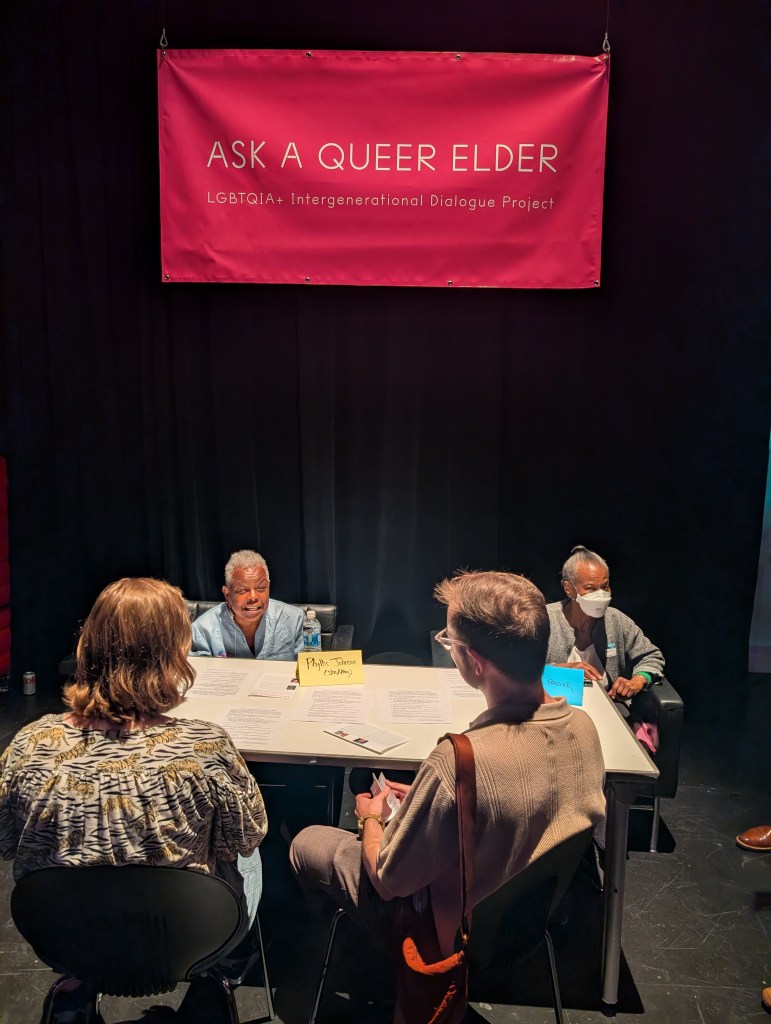 LGBTQ+ Intergenerational Dialogue Project participant Phyllis Johnson (left) in conversation with event attendees. Photo by Carrie Maxwell
LGBTQ+ Intergenerational Dialogue Project participant Phyllis Johnson (left) in conversation with event attendees. Photo by Carrie Maxwell
The event was a major collaboration between some of Chicago’s queer institutions: Gerber/ Hart Library and Archives, 6500 N. Clark St., the LGBTQ+ Intergenerational Dialogue Project and Queen!, a weekly dance party at smartbar, 3730 N. Clark St..
It was hosted by Queen!’s hosts, Lucy Stoole and Nico. Queen!, a house and disco party that’s been at smartbar on Sundays for more than a decade, is its own Chicago mainstay.
Stoole said Queen!’s takeover of the MCA makes sense: “It’s fitting,” she said. “This is the community a lot of us are already a part of. This party has touched every pocket of this city so many different ways.”
The 21+ party included multiple interactive programs. Adult programmer Atkinson said that having lots of options for people to engage with was intentional.
“Finding these different ways of being for folks and ways of togetherness is really, really important for us,” he said.
In the theater on the first floor, Gerber/ Hart and the Dialogue Project set up multiple tables onstage for people to peruse archival LGBTQ+ material and to start conversations with queer elders from the Project.
Gerber/ Hart loaned some of their archival material to the City in a Garden exhibit and contributed photographs to projections playing on the dance floor. Gerber/ Hart’s Operations Director Erin Bell said that, beyond introducing many partygoers to the archive for the first time, places like this help to remind Chicagoans that queer people have always been a part of the city’s history.
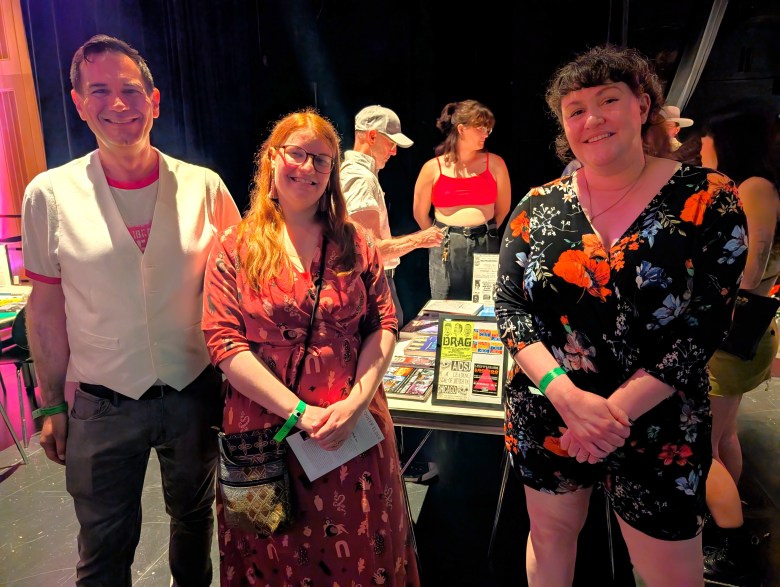 Gerber-Hart Library and Archives Staffers Michael Rashid, Erin Bell and Jen Dentel. Photo by Carrie Maxwell
Gerber-Hart Library and Archives Staffers Michael Rashid, Erin Bell and Jen Dentel. Photo by Carrie Maxwell
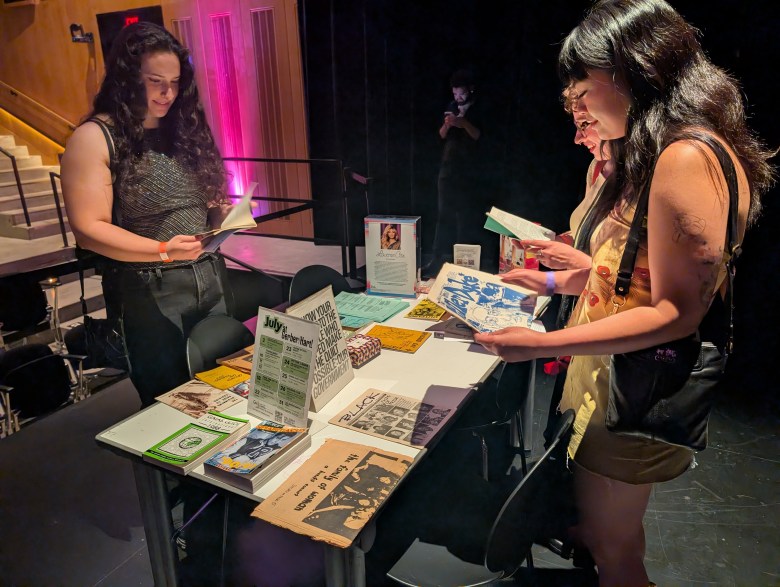 Attendees look at Gerber-Hart Library and Archives materials. Photo by Carrie Maxwell
Attendees look at Gerber-Hart Library and Archives materials. Photo by Carrie Maxwell
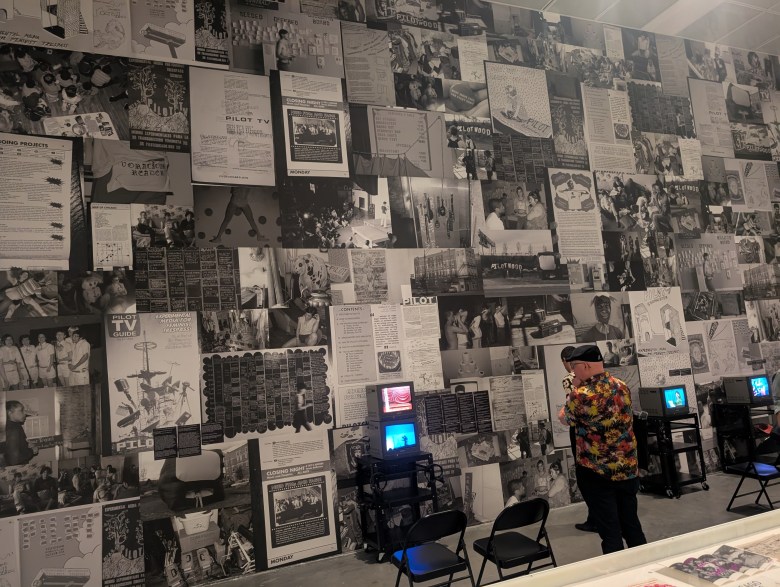 Photo by Carrie Maxwell
Photo by Carrie Maxwell
“It’s just like forging these connections and reminding people about our history and introducing people to our history,” she said. “We’re here, we’ve always been here. Chicago has a rich, rich history and a very important role in our queer history as well, as a nation.”
On the second floor, Chicago DJ mainstays Ralphi Rosario and Michael Serafini played house music all through the party. The second floor is also where City in the Garden is situated. The name for the exhibit is the English translation of Chicago’s official motto: Urbs in Horto.
On the top floor, a bedazzling station allowed people to personalize a colored bandana and learn more about gay hanky code, a color-coded system historically used by gay men to non-verbally signal sexual preferences. Attendees indeed waited in long lines to participate in much of the programming, and some people couldn’t experience it before the party ended at 10 p.m.
In the first hour of the party, performance artists activated one of the artworks, “The Rite” by Brendan Fernandes. The performers danced inside a cage-like structure, interacting with it and exploring the tension. Made in 2019, the work is recontextualized in a tense political moment for queer people.
“It’s a duet,” Fernandes said about the piece. “It’s two bodies moving together, looking for each other, finding each other. But also, within a queer space, [it’s] the idea of cruising, finding encounters, coming together, breaking apart, coming back together.”

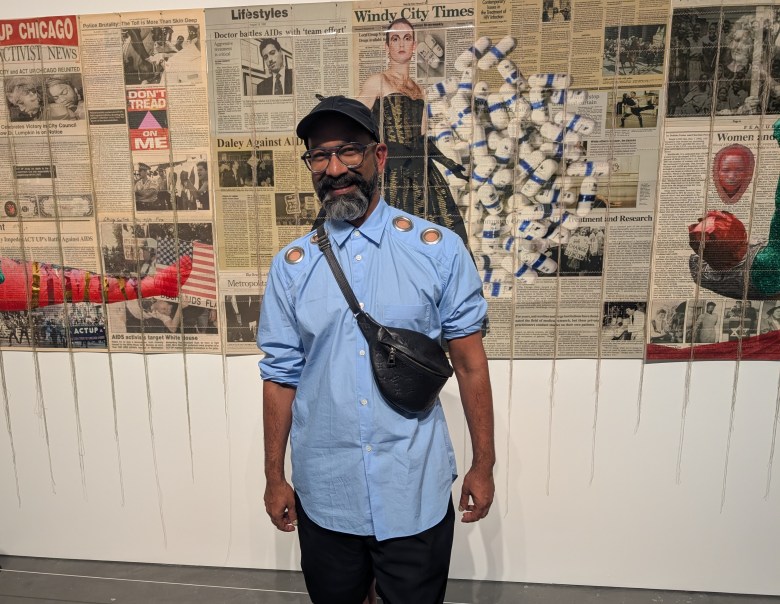
The piece will be activated again on September 12 and March 3.
With City in a Garden and Prime Time, the MCA is emphasizing the idea that art, activism, rhinestones and dancing are all part of the classic queer experience. Atkinson said it’s more important than ever to center joy and celebration in the midst of so much political strife.
“Things are really, really bad,” he said. “There’s a lot of sadness and anger and despair. Part of it for me, in doing an event like this, in fore-fronting joy and togetherness and dancing, is partially because we need time to celebrate. But it’s also a very specific political statement. We will still have joy.”
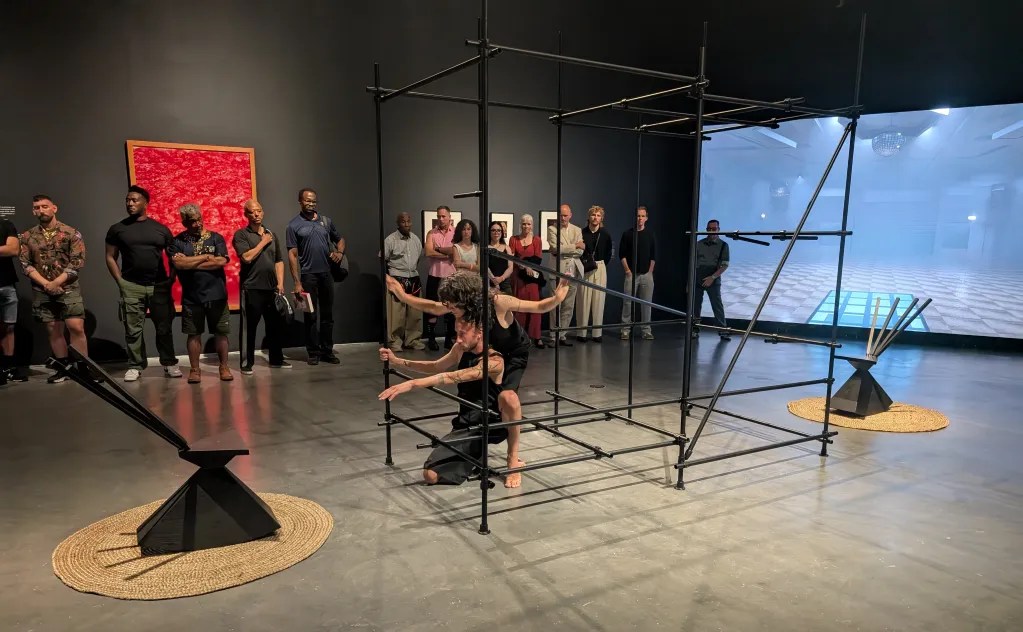
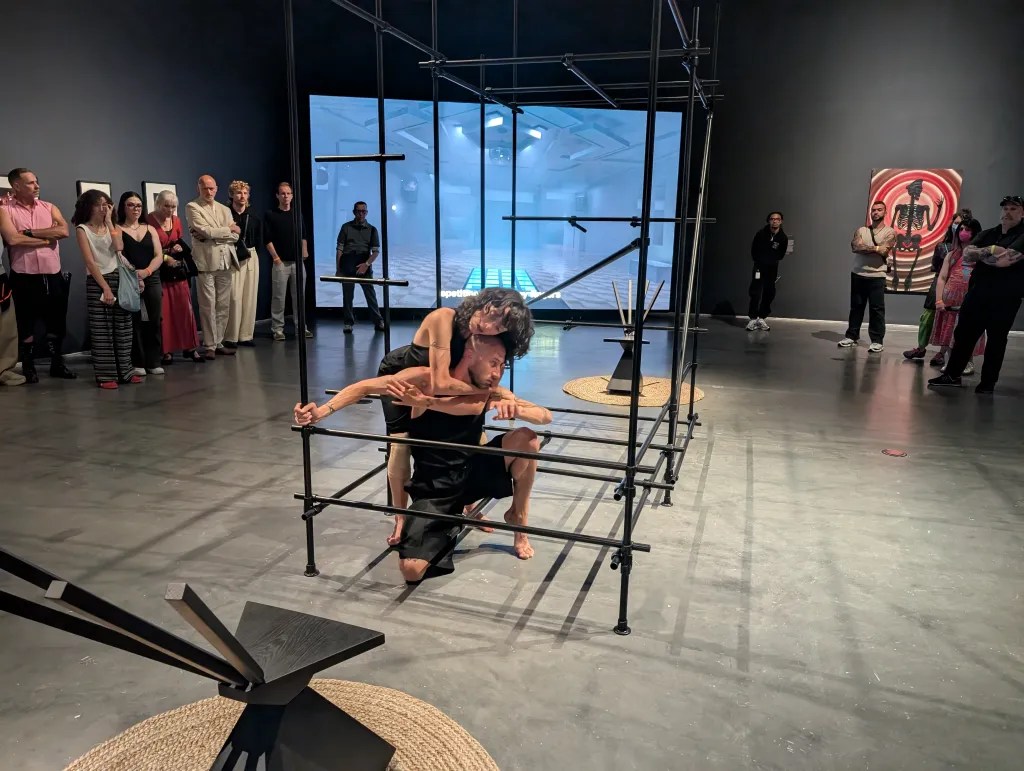
Related
